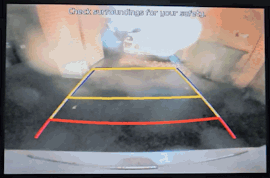Backup cameras The good Backup cameras have been on our radar for some time now. We appreciate the look behind us when in reverse: they help us park, keep us from hitting someone or something from behind, etc. The bad However, since April first, there have been eight separate recalls for failing backup cameras, and …
Category: Articles & Commentaries
Discussions on topics of interest to drivers concerning things they may not understand about their vehicles as well as articles on the future of the auto industry.
Permanent link to this article: https://dashboardsymbols.com/2025/05/lane-change-page-swells-yet-again/
Permanent link to this article: https://dashboardsymbols.com/2025/05/backup-cameras-the-good-the-bad-the-ugly/
Relying on your phone to operate your car could be big trouble!
Relying on your phone More and more car manufacturers are creating smart phone apps that allow drivers to operate their vehicles with the phone. But take it from us, don’t continue relying on your phone! First and foremost, smart phones are in constant use and, as a consequence, are in constant need of a charge. …
Permanent link to this article: https://dashboardsymbols.com/2025/05/relying-on-your-phone-to-operate-your-car-could-be-big-trouble/
Has Skoda solved my issue with the charge system warning light?
Charge system warning Just a few months ago, I ran a piece that was essentially a complaint about the industry’s use of the charge system warning light. While it is made to look like a battery, the light “fails” to warn of a fault in the battery itself. In the piece, I recounted three instances …
Permanent link to this article: https://dashboardsymbols.com/2025/05/has-skoda-solved-my-issue-with-the-charge-system-warning-light/
Kia refuses to do anything about its overly loud VESS module
Loud VESS module I filed a complaint with Kia America about the overly loud VESS module in the Kia Niro EV. You may recall that I disconnected the module recently. All I’ve done is start a fight! The response I got did nothing but lay out what I and everyone else knows (there was also …
Permanent link to this article: https://dashboardsymbols.com/2025/05/kia-refuses-to-do-anything-about-its-overly-loud-vess-module/
Skoda back-up open and start pages now posted on the site
Skoda back-up We put up a symbols page for this manufacturer but for some reason we had not done a set of Skoda back-up open and start pages. That oversight has now been remedied. A back-up open and start method is necessary in keyless or push button start models as the battery in the key …
Permanent link to this article: https://dashboardsymbols.com/2025/05/skoda-back-up-open-and-start-pages-now-posted-on-the-site/
Changes to Rivian back-up open and start offers a 2025 surprise
Rivian back-up open and start We have assembled our first Rivian back-up open and start, the lack of which was an oversight that we were surprised to discover. In any case, 2025 models offer a back-up surprise. Back-up open and start processes are made necessary if and when the battery in the key fob dies. …
Permanent link to this article: https://dashboardsymbols.com/2025/05/changes-to-rivian-back-up-open-and-start-offers-a-2025-surprise/


Lane change page swells yet again
Lane change With the addition of three new symbols from Skoda, our Lane Departure and Lane Change Assist page now sports a total of 61 indicators! The symbols, all carrying at least the color green, are part of the company’s Travel Assist system, and more specifically for these indicators, Lane Guidance. All green indicates that …
Continue reading